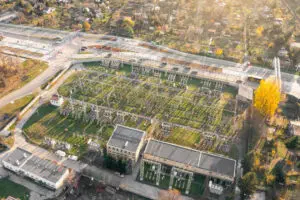 Power is a lot like oxygen or water from the tap — you notice it only when it’s gone.
Power is a lot like oxygen or water from the tap — you notice it only when it’s gone.
But the nation’s electrical grid, saddled with aging infrastructure and battered by increasingly volatile and extreme weather, struggles to meet our insatiable energy needs. Much of the trouble is physical in nature — transmission lines break due to wildfires or frost, for example, and excessive demand causes blackouts. But some of it is because “the grid” is actually three complex and largely independent systems, each subject to different regulatory standards. Texas’s deregulated system collapsed in a catastrophic grid-wide meltdown and a record-breaking winter storm in 2021. Such disruptions are going to increase in frequency and severity barring a complete overhaul, and the most vulnerable residents, typically Black, brown, and low-income communities, will bear the brunt of it.
Fixing the problem won’t be easy. The grid — a vast network of power generation plants, transmission lines, and substations that generate and distribute electricity — spans the continent and requires a balletic dance of supply and demand, calibrated to the microsecond to provide exactly the amount of electricity required. Too little power causes a blackout; too much creates waste and poof, it’s gone. “The grid is unlike anything on earth,” says Duncan Campbell, VP at the microgrid startup Scale Microgrid Solutions and cofounder of the DER Task Force, a community of activists working toward a more equitable solution called distributed energy resources. “If you have too much corn, you stick it in a silo till next season, but if you have too much electricity, you just have to get rid of it.” And, presumably, the resources consumed to produce it.
Replacing or repairing aging equipment and adding additional electrical generation to meet increasing demand is expensive, and who wants a power plant in their neighborhood? But there’s another way: distributed energy resources (DER). Chances are, you’ve encountered DER without knowing it: Grid-connected devices like solar panels, electric vehicles, and HVAC systems are all examples of this technology. Such a system ditches the complexity of one large grid in favor of many smaller systems that generate and distribute power within a community or neighborhood. They are typically located close to where power is being used and usually rely on renewable energy.
Though much of the technology is cutting-edge, the idea dates to the 1970s. At the time, New York City’s East Village was dotted with abandoned tenements, so a group of young architects stuck the nation’s first rooftop urban windmill atop one, feeding extra electricity back to the grid and attracting a lawsuit when they requested compensation from the city’s power utility. (The group won.) Interest in DERs has exploded over the past few years as prices drop and energy experts discover how they can be used to manage and support an increasingly diversified and resilient grid — and bring green energy equity to more communities. One such example is in Oakland, California, where a peaker plant that provides additional electricity at times of high demand will soon be replaced by a network of solar panels and batteries installed in low-income housing.
Leave a Reply